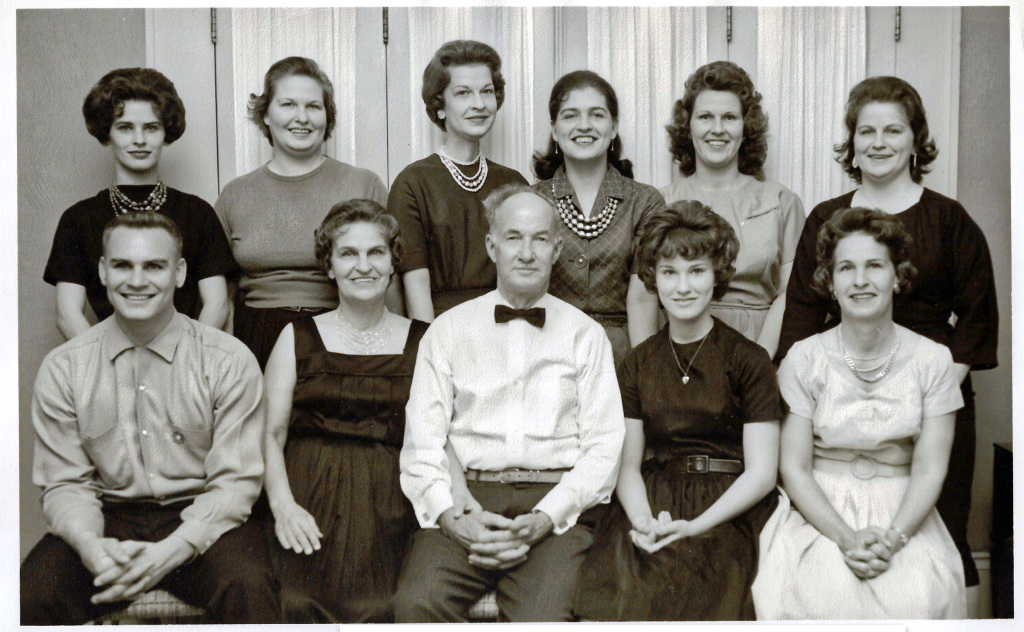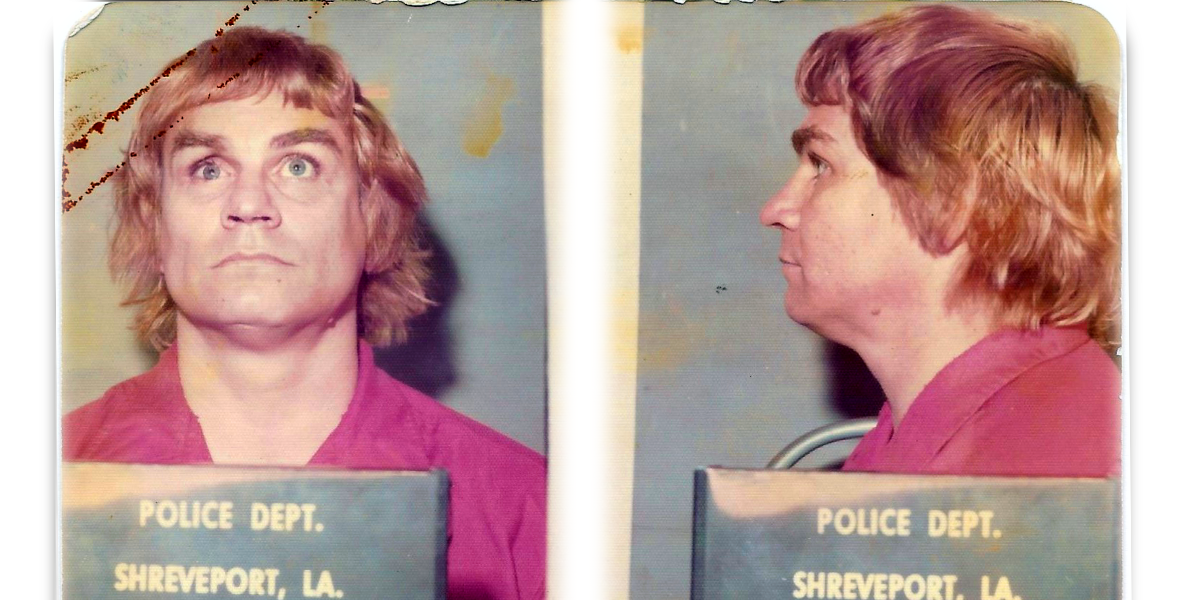Hitman’s rap sheet only scratches the surface
In two earlier installments, we reviewed the early criminal history of the accused Dixie Mafia hitman killed in St. Tammany Parish in 1980. Readers responded to those reports, wanting to know more and asking for evidence of Charlie Thrash’s misdeeds.
What follows is the complete Louisiana State Police rap sheet of Charles Olan Thrash:
- April 15, 1947 — Warrant issued for New Orleans Armed Robbery.
- April 2, 1952 — Arrested for Armed Robbery.
- July 19, 1952 — Sentenced to 9 years for Armed Robbery.
- August 23, 1954 — Paroled from Louisiana State Penitentiary.
- January 5, 1955 — Charged with Violating Parole.
- February 27, 1955 — Charged with Baton Rouge Auto Theft.
- January 5, 1956 — Charged with reckless driving.
- January 19, 1956 — Charged with Armed Robbery in Bunkie.
- February 1, 1956 — Charged with Auto Theft in Alexandria.
- April 5, 1956 — Warrant issued for Baton Rouge Auto Theft.
- April 5, 1956 — Arrested for Baton Rouge Auto Theft.
- April 9, 1956 — Charged with Armed Robbery and Public Bribery.
- July 13, 1956 — Charged with Theft and Violating Parole.
- July 14, 1956 — Given 9 years plus the balance of his earlier sentence.
- July 7, 1957 — Escaped from Charity Hospital.
- September 12, 1957 — Warrant issued for Hammond Armed Robbery.
- December 23, 1957 — Warrant issued for robbing a safe in Franklin.
- February 21, 1958 — Arrested for New Orleans Burglary.
- April 9, 1958 — Sentenced to another 13 years for Armed Robbery, Burglary, and Violating Parole.
- April 11, 1958 — Designated Habitual Criminal and given another 13 years to run concurrently with the prior sentence.
- October 10, 1961 — Discharged from Louisiana State Penitentiary at Angola.
- March 26, 1962 — Arrested for Baton Rouge Armed Robbery.
- June 8, 1962 — Judge John Rarick charged Thrash with violating the Multiple Offender Act and sentenced him to another 58 years.
- December 7, 1965 — Charged with Aggravated Battery and Criminal Conspiracy to Commit Extortion inside Angola State Penitentiary. (He convinced a dozen convicts to allow him to slice them with a razor and report the cuts as abuse by prison guards, causing a prison strike and riot.) Thrash gets another 4 years added to his sentence.
- September 27, 1968 — Escaped from Charity Hospital.
- January 29, 1969 — Arrested in New Orleans, Armed Robbery suspect.
- February 13, 1969 — Given another three years for Simple Escape.
- March 20, 1972 — Released with Executive Pardon by Governor.
- January 15, 1973 — Arrested in New Orleans and charged with Conspiracy to Commit Armed Robbery and Possession of Stolen Property.
- March 4, 1973 — Arrested for Aggravated Burglary.
- July 29, 1973 — Warrant issued for Armed Robbery in Lafayette.
- December 6, 1974 — Arrested in Shreveport with a stolen vehicle and two stolen shotguns. FBI suspects stolen guns used in multiple homicides.
Casual readers will wonder why Governor Edwards pardoned a career criminal with such an extensive history. However, Edwards was not to blame.
Three months after his election in 1968, Governor John McKeithen insisted the Louisiana Board of Pardons and Parole grant Thrash Clemency, releasing him with time served. Thrash’s wife, the governor insisted, would soon die of cancer, and she needed the inmate free to care for her in her final years.
That week, New Orleans District Attorney Jim Garrison threatened to subpoena what he termed “manipulated members” of the Parole Board, telling reporters, “With this board, we see the outline of a hydra made up of public officials with invisible alliances with each other who maintain in effect an invisible mutual assistance pact.”
The following day, the Parole Board publicly and unanimously denied the governor’s request, and the press expected McKeithen to release Thrash anyway by issuing an Executive Pardon.

However, a series of articles in Life magazine that year tied the governor to organized crime in New Orleans, an association he vehemently denied. Given Thrash’s reputation among law enforcement as an associate of reputed mobster Carlos Marcello, the governor quietly commuted Thrash’s sentence to fifteen years rather than release him.
In 1972, Thrash’s tenth cumulative year at Angola, Governor Edwin W. Edwards took office.
On April 3, 1972, Warden C. Murray Henderson recommended that the Parole Board reduce Thrash’s Executive Clemency reduction to ten years. Before the board and Governor Edwards, the warden described Thrash as a model inmate. He said Thrash led the Angola Jaycees and multiple rehabilitation programs.
Warden Henderson said Thrash ran the prison bakery and was a licensed Dental Technician. He took seven mail-order Dale Carnegie courses, the warden said, learning two or three “highly employable trades.”
The board chair reminded the warden that Thrash escaped from Charity Hospital four years earlier while the board was considering his case. Warden Henderson said Thrash suffered from duress, “mitigating circumstances” because of his wife’s cancer. “This is still the case today,” Henderson said. “Mrs. Thrash has undergone many painful surgeries.”
In 1968, Thrash climbed out of the Charity Hospital window and escaped in his wife’s car, leaving her stranded and facing police in a hospital waiting room. Mrs. Rita Rose Jochum Thrash divorced her husband later that year.
Rita also beat cancer. She died in 1986, six years after Thrash’s murder and seven years after she remarried him.
New Orleans Police Officers Eugene Fields and Gus Krinke found Rita’s car abandoned in 1968. NOPD lifted Thrash’s prints, along with those of an associate. One month later, they arrested the associate who supplied Thrash’s location, allowing police to nab him January 1969.
Following a later arrest, March 1973, police say Charles Olan Thrash traded his life as a thief for a new vocation, working as a gun-for-hire until he died in 1980.
In our next installment, we review the jobs not listed on this career criminal’s rap sheet and recount, for the record, Charlie Thrash’s greatest hits.

